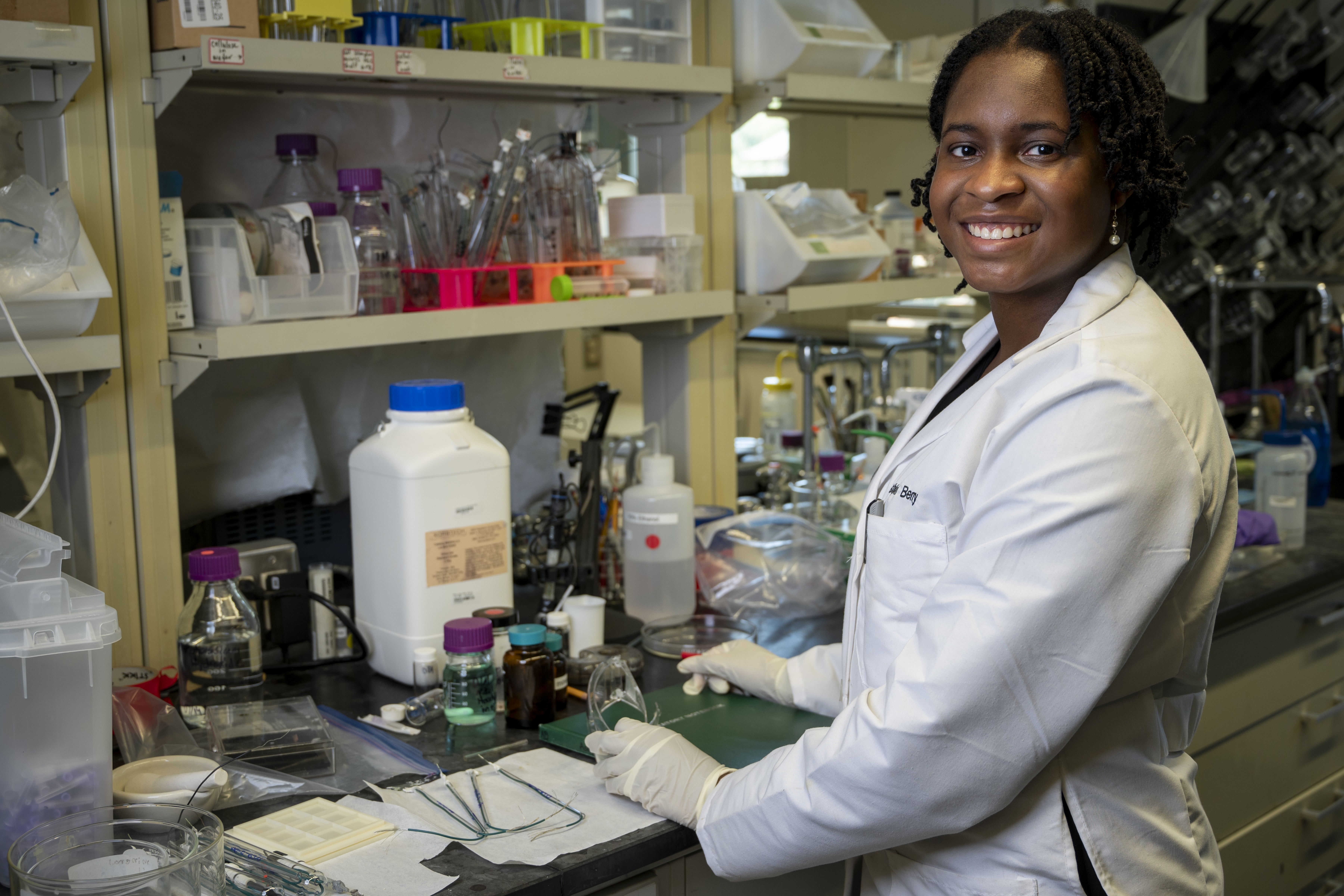The graduate student in the Department of Chemistry is working on sustainable ways to extract hydrogen fuel from water. Her work has led to recognition from the Department of Energy and a six-month fellowship at Sandia National Laboratories.

Ashlynn Berry, a doctoral student in the Department of Chemistry, thinks a lot about energy: How it’s produced, how it’s stored, and what it would take to make the world’s energy system sustainable. “Ever since high school, I’ve been interested in helping solve pollution and other environmental crises,” she said. “That means looking at energy.”
Those big questions have led to a major honor. Berry is one of 60 graduate students from across the country — and the only one in Missouri — selected to participate in the Department of Energy’s Office of Science Graduate Student Research (SCGSR) fellowship program. As a participant, she will spend six months at Sandia National Laboratories in Livermore, California, where she will work with renowned chemist (and WashU alum) Mark Allendorf, AB ’80. “The recognition from the Department of Energy is pretty incredible,” she said. “It will be an amazing learning experience.”
At WashU, Berry has been working with Bryce Sadtler, associate professor of chemistry, to develop new materials for the green production of hydrogen fuel from water — work that is vital to the mission of developing gasoline alternatives for cars and trucks. In theory, water molecules could be an abundant source of fuel, but the heat required to break the bonds between hydrogen and oxygen in H2O makes the process expensive and energy-inefficient. “Currently, most hydrogen is produced using fossil fuels,” Berry said.
Berry is studying the use of metal-based catalysts — nickel oxide and manganese oxide — that would use renewable electricity to speed the chemical reactions needed to release hydrogen from water. “With a catalyst, it doesn’t take as much energy to produce hydrogen,” she said. “You get more bang for the buck.” To enhance the process, Berry traps the catalysts and water molecules in tiny spaces within a porous material, a process called nanoconfinement.
The work is an important step toward the ultimate goal of green, carbon-neutral energy, Sadtler said. Berry will make even more progress during her fellowship at Sanida, he added. “The DOE fellowship will provide Ashlynn with the opportunity to expand her research experience. She’ll have access to unique instrumentation and facilities that can only be found at a national laboratory.”
Finding greener ways to extract hydrogen from water is just one part of the green energy puzzle. At Sandia, Berry will work on another key issue: safe and efficient storage of hydrogen gas. To tackle this problem, she will once again call on her expertise with nanoconfinement. In collaboration with Allendorf, she will look for ways to trap hydrogen in porous materials under high pressure. The hydrogen could then be released with mild heating requiring minimal energy. “We're essentially manipulating the chemistry of these molecules so that they'll release the hydrogen at lower temperatures,” she said.
Berry’s interest in environmental science goes back to her high school days at Indian Springs School outside of Birmingham, Alabama. “Every course emphasized environmental issues, whether it was a science class or English,” she said. As an undergrad at the University of Alabama at Birmingham, she studied ways to extract harmful compounds from plastics prior to recycling. Impressed by the work by the work of Sadtler and colleagues, she applied to WashU for grad school, a move that has paid off personally and professionally. “Dr. Sadtler has been incredibly supportive of my training and research,” she said.
Berry’s not sure what she wants to do after getting her PhD. Spending six months at Sandia next year might help clarify that picture. “That’s a great part about this fellowship,” she said. “I’ll get to see how a national laboratory works.” If she doesn’t end up working at a national laboratory, she might pursue a career in industry. Wherever she works, her goal — cleaner, greener energy — will remain the same. “I’m open to whatever opportunities turn up,” she said.



